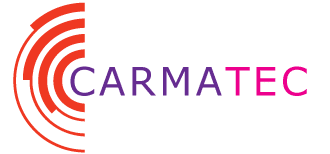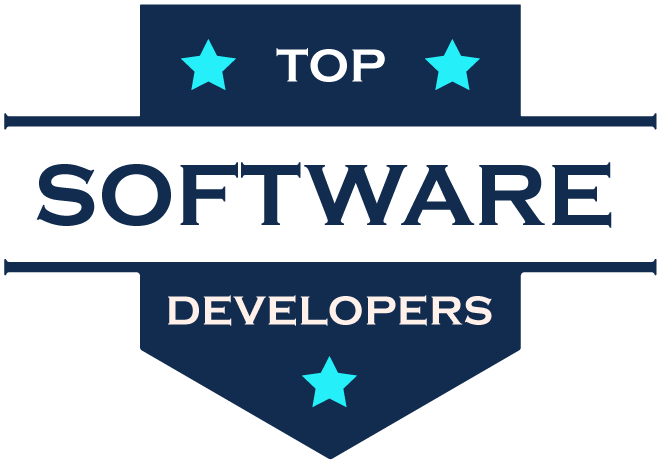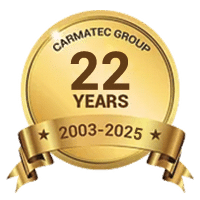The Internet of Things (IoT) is reshaping industries by connecting devices, collecting vast amounts of data, and enabling smarter decision-making. By 2025, IoT devices are projected to generate over zettabytes of data globally, creating both opportunities and challenges for businesses. Effective IoT Data Management is critical to harnessing this data’s potential, ensuring it is accurate, secure, and actionable. From healthcare to manufacturing, IoT data management drives efficiency, innovation, and competitive advantage. This blog explores IoT data management’s key benefits and use cases in 2025, highlighting its transformative impact across industries.
1. Understanding IoT Data Management
IoT data management involves the practices, technologies, and policies for collecting, storing, processing, analyzing, and securing data generated by interconnected devices. These devices—ranging from smart thermostats to industrial sensors—produce continuous streams of data that require robust systems to manage effectively.
- Core Components: Data collection (via sensors or gateways), storage (cloud or edge), processing (real-time or batch), analytics (AI/ML-driven insights), and security (encryption, access controls).
- Challenges: High data volumes, variety (structured/unstructured), velocity (real-time streams), and security risks like breaches or data silos.
- Goals: Ensure data accuracy, accessibility, and compliance while enabling actionable insights for business outcomes.
In 2025, advancements in edge computing, AI, and 5G networks are making IoT data management more efficient, scalable, and secure, unlocking new possibilities for enterprises.
2. Key Benefits of IoT Data Management in 2025
Effective IoT data management delivers significant advantages, empowering businesses to optimize operations, enhance customer experiences, and stay ahead in a data-driven world. Here are the primary benefits:
2.1 Real-Time Decision-Making
IoT devices generate real-time data, and advanced data management systems process it instantly to inform decisions. In 2025, low-latency 5G networks and edge computing enable faster data processing closer to the source, reducing delays.
- Beispiel: In logistics, real-time tracking of fleet vehicles using IoT sensors allows companies to optimize routes, saving fuel and time.
- Auswirkungen: Faster decisions improve operational efficiency, reduce costs, and enhance responsiveness to market changes.
2.2 Cost Efficiency
By analyzing IoT data, businesses identify inefficiencies, optimize resource use, and reduce operational costs. Predictive analytics, a key component of IoT data management, anticipates issues before they escalate.
- Beispiel: In manufacturing, IoT sensors monitor equipment health, predicting maintenance needs to avoid costly downtime.
- Auswirkungen: Reduced maintenance costs, energy savings, and extended asset lifespans drive significant financial benefits.
2.3 Enhanced Customer Experiences
IoT data provides insights into customer behavior, preferences, and needs, enabling personalized offerings. In 2025, AI-driven analytics refine these insights for hyper-personalized experiences.
- Beispiel: Retailers use IoT-enabled smart shelves to track inventory and customer interactions, tailoring promotions in real time.
- Auswirkungen: Personalized experiences boost customer satisfaction, loyalty, and revenue.
2.4 Improved Security and Compliance
IoT data management systems in 2025 prioritize security through encryption, access controls, and anomaly detection. They also ensure compliance with regulations like GDPR and CCPA by tracking data usage.
- Beispiel: Healthcare providers use secure IoT data platforms to protect patient data while complying with HIPAA regulations.
- Auswirkungen: Reduced risk of breaches, enhanced trust, and streamlined regulatory reporting.
2.5 Scalability and Flexibility
Modern IoT data management platforms are built on cloud and hybrid architectures, offering scalability to handle growing data volumes. They also integrate with diverse systems, from CRMs to ERP platforms.
- Beispiel: Smart cities leverage scalable IoT data systems to manage traffic, energy, and waste across thousands of devices.
- Auswirkungen: Businesses can adapt to growth or market shifts without overhauling infrastructure.
2.6 Innovation and Competitive Advantage
IoT data fuels innovation by uncovering trends and opportunities. Early adopters in 2025 gain a first-mover advantage, launching data-driven products and services.
- Beispiel: Insurers use IoT data from wearables to offer usage-based policies, attracting health-conscious customers.
- Auswirkungen: Innovative offerings differentiate businesses, capturing market share and talent.
These benefits collectively transform how organizations operate, making IoT data management a strategic priority in 2025.
3. Key Use Cases of IoT Data Management in 2025
IoT data management is revolutionizing multiple industries by enabling data-driven solutions. Below are prominent use cases showcasing its impact in 2025, supported by real-world applications.
3.1 Healthcare: Remote Patient Monitoring
IoT devices like wearables and smart medical equipment collect real-time patient data, such as heart rate, glucose levels, or blood pressure. Effective data management ensures this data is securely stored, analyzed, and shared with healthcare providers.
- Wie es funktioniert: IoT sensors transmit data to a cloud platform, where AI algorithms detect anomalies (e.g., irregular heartbeats). Alerts are sent to doctors, and patients access insights via mobile apps.
- Vorteile: Early diagnosis, reduced hospital visits, and personalized treatment plans improve patient outcomes.
- Beispiel: In 2025, hospitals use IoT data to monitor chronic disease patients remotely, cutting readmission rates by up to 20%.
- Data Management Role: Ensures data privacy, integrates with EHR systems, and supports real-time analytics for timely interventions.
3.2 Manufacturing: Predictive Maintenance
IoT sensors embedded in machinery monitor performance metrics like temperature, vibration, or pressure. Data management systems analyze this data to predict equipment failures before they occur.
- Wie es funktioniert: Sensors feed data to an edge computing platform for real-time analysis. Machine learning models identify patterns signaling potential failures, schedule maintenance proactively.
- Vorteile: Minimized downtime, reduced maintenance costs, and improved production efficiency.
- Beispiel: A 2025 study shows that manufacturers using IoT data management reduce unplanned downtime by 30% through predictive maintenance.
- Data Management Role: Processes high-volume sensor data, ensures data quality, and integrates with ERP systems for automated scheduling.
3.3 Logistics and Supply Chain: Real-Time Tracking
IoT devices like RFID tags and GPS trackers provide real-time visibility into goods’ location, condition, and movement. Data management systems unify this data for end-to-end supply chain transparency.
- Wie es funktioniert: IoT gateways collect data from trackers and send it to a cloud platform. Analytics optimize routes, monitor storage conditions (e.g., temperature for perishables), and predict delivery times.
- Vorteile: Reduced delays, lower costs, and improved customer satisfaction.
- Beispiel: In 2025, logistics firms use IoT data to reroute shipments during traffic disruptions, saving 15% on fuel costs.
- Data Management Role: Handles real-time data streams, ensures data integrity, and supports integration with warehouse management systems.
3.4 Insurance: Usage-Based Insurance (UBI)
IoT data from connected devices, such as telematics in cars or wearables, enables insurers to offer personalized policies based on real-time behavior. Data management systems process and analyze this data to adjust premiums dynamically.
- Wie es funktioniert: Telematics devices track driving habits (e.g., speed, braking). Data is processed in real time, and AI models calculate risk profiles to tailor premiums.
- Vorteile: Fairer pricing, reduced fraud, and enhanced customer engagement.
- Beispiel: Auto insurers in 2025 use IoT data to offer safe drivers up to 25% lower premiums, boosting retention.
- Data Management Role: Secures sensitive data, ensures compliance with regulations like GDPR, and enables real-time pricing adjustments.
3.5 Smart Cities: Urban Optimization
Smart cities use IoT devices to manage traffic, energy, and waste. Verwaltung der Daten systems aggregate data from sensors across the city, enabling real-time optimization.
- Wie es funktioniert: Traffic sensors monitor congestion, sending data to a central platform. AI optimizes signal timings, while energy sensors adjust streetlight usage based on demand.
- Vorteile: Reduced congestion, lower energy costs, and improved quality of life.
- Beispiel: In 2025, smart cities use IoT data to cut traffic delays by 20% and energy use by 15%.
- Data Management Role: Manages diverse data sources, ensures scalability, and supports real-time analytics for urban planning.
3.6 Retail: Smart Inventory Management
IoT-enabled smart shelves and RFID tags track inventory levels and customer interactions in real time. Data management systems analyze this data to optimize stock and personalize promotions.
- Wie es funktioniert: Sensors detect low stock or high-demand items, triggering automatic reordering. Customer data informs targeted marketing campaigns.
- Vorteile: Reduced stockouts, improved sales, and enhanced customer experiences.
- Beispiel: Retailers in 2025 use IoT data to reduce inventory waste by 10% and boost sales through personalized offers.
- Data Management Role: Integrates with CRM systems, ensures data accuracy, and supports real-time analytics.
3.7 Energy: Smart Metering
IoT smart meters monitor energy consumption in homes and businesses, providing real-time usage data. Data management systems analyze this data to optimize energy distribution and encourage efficiency.
- Wie es funktioniert: Meters send usage data to a cloud platform, where analytics identify peak demand patterns. Utilities adjust supply, and consumers receive usage insights via apps.
- Vorteile: Lower energy costs, reduced outages, and sustainable consumption.
- Beispiel: In 2025, utilities use IoT data to cut energy waste by 12% through dynamic load balancing.
- Data Management Role: Handles high-frequency data, ensures security, and integrates with billing systems.
4. Challenges in IoT Data Management
While IoT data management offers immense potential, it faces challenges that businesses must address in 2025:
- Data Volume and Velocity: The sheer scale and speed of IoT data require scalable storage and processing solutions like cloud-edge hybrids.
- Sicherheitsrisiken: IoT devices are vulnerable to cyberattacks, necessitating robust encryption and monitoring.
- Data Silos: Fragmented data across devices or platforms hinders insights, requiring integrated systems.
- Einhaltung der Vorschriften: Regulations like GDPR demand strict data governance, increasing complexity.
- Interoperability: Diverse devices and protocols complicate data standardization.
Solutions like AI-driven automation, blockchain for security, and standardized IoT platforms are mitigating these challenges, enabling seamless data management.
5. Trends Shaping IoT Data Management in 2025
Several trends are enhancing IoT data management, making it more powerful and accessible:
- Edge Computing: Processing data at the edge reduces latency and bandwidth costs, ideal for real-time applications like autonomous vehicles.
- AI and Machine Learning: AI enhances predictive analytics, anomaly detection, and automation, unlocking deeper insights.
- 5G Networks: Faster, low-latency connectivity supports real-time data streaming across millions of devices.
- Blockchain-Integration: Blockchain ensures data integrity and security, especially in supply chains or healthcare.
- Sustainability Focus: IoT data optimizes energy use and reduces waste, aligning with global sustainability goals.
These trends, combined with robust data governance frameworks like DAMA-DMBOK, empower businesses to maximize IoT data’s value.
6. How to Implement Effective IoT Data Management
To leverage IoT data management in 2025, businesses should follow these steps:
- Assess Needs: Identify use cases (e.g., predictive maintenance, customer personalization) and data requirements.
- Wählen Sie die richtige Plattform: Select scalable, secure platforms that support edge and cloud processing, like AWS IoT or Azure IoT.
- Ensure Security: Implement end-to-end encryption, access controls, and regular audits to protect data.
- Integrate Systems: Use APIs to connect IoT data with existing CRM, ERP, or analytics tools for seamless workflows.
- Leverage Analytics: Deploy AI/ML models to extract actionable insights from raw data.
- Zugpersonal: Upskill teams on IoT technologies and data governance to ensure adoption and compliance.
- Monitor and Optimize: Use KPIs like data accuracy, processing speed, and cost savings to evaluate performance and refine strategies.
Partnering with experienced IoT solution providers can streamline implementation, ensuring alignment with business goals.
Abschluss
IoT Data Management is a cornerstone of digitale Transformation in 2025, driving efficiency, innovation, and customer satisfaction across industries. From real-time decision-making in logistics to predictive maintenance in manufacturing, its benefits are profound, while use cases like smart cities and usage-based insurance highlight its versatility. Despite challenges like security and data silos, advancements in edge computing, AI, and 5G are making IoT data management more accessible and impactful. By adopting robust strategies and platforms, businesses can unlock the full potential of IoT data, gaining a competitive edge in a data-driven world. For expert IoT data management solutions tailored to your industry, trust Carmatec to deliver scalable, secure, and innovative platforms that transform your operations and drive measurable results.













